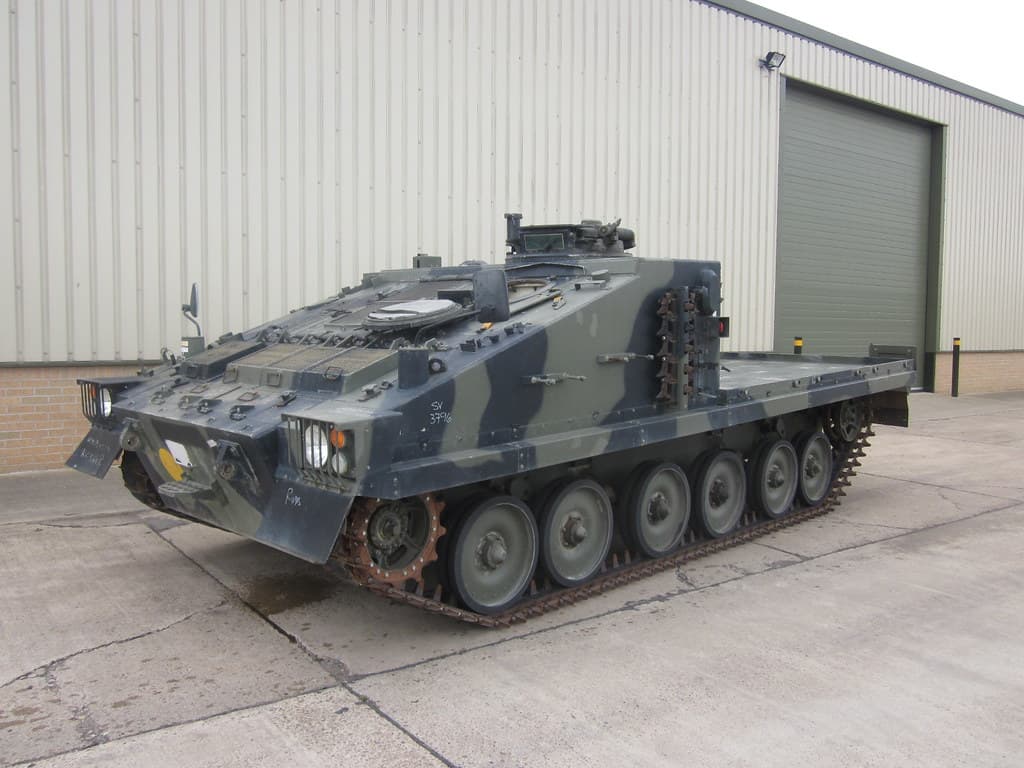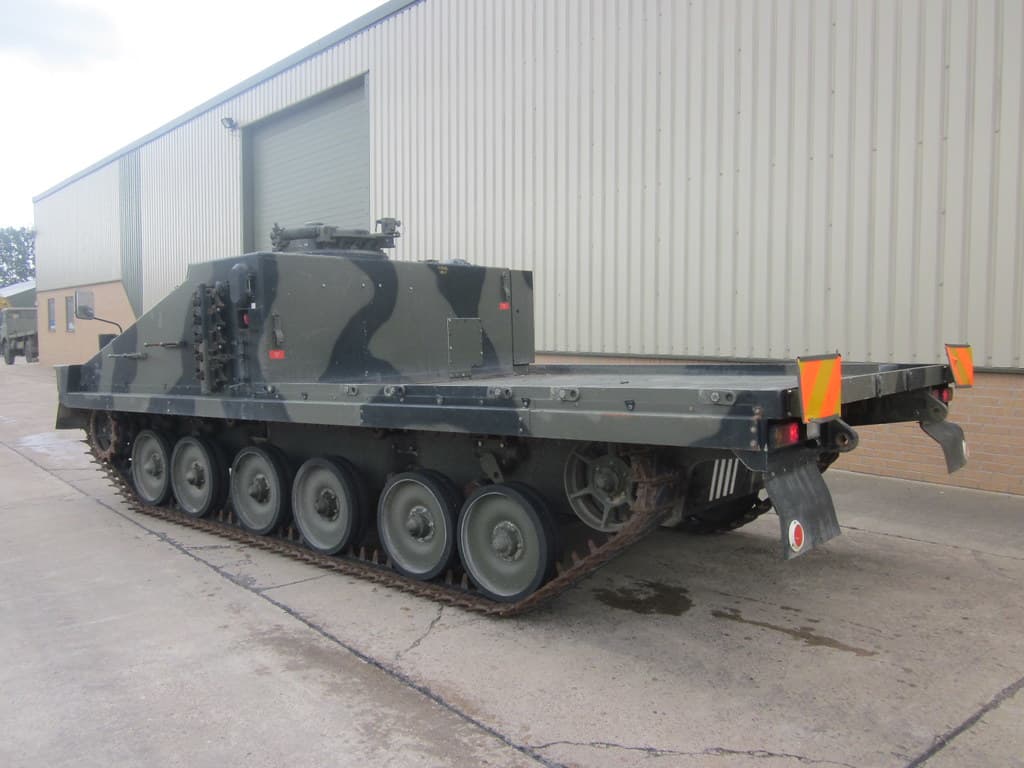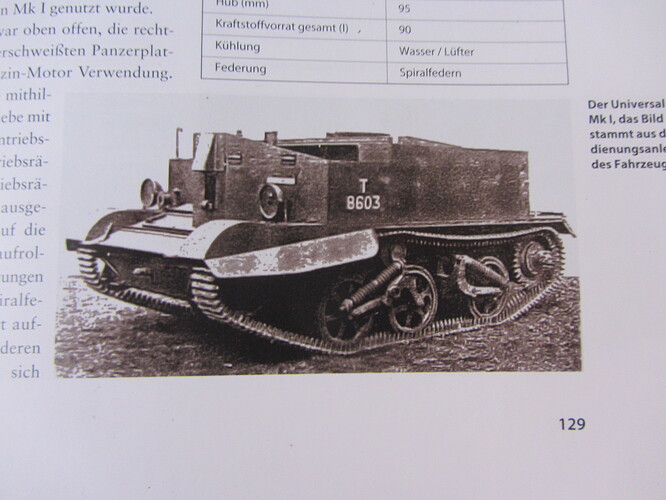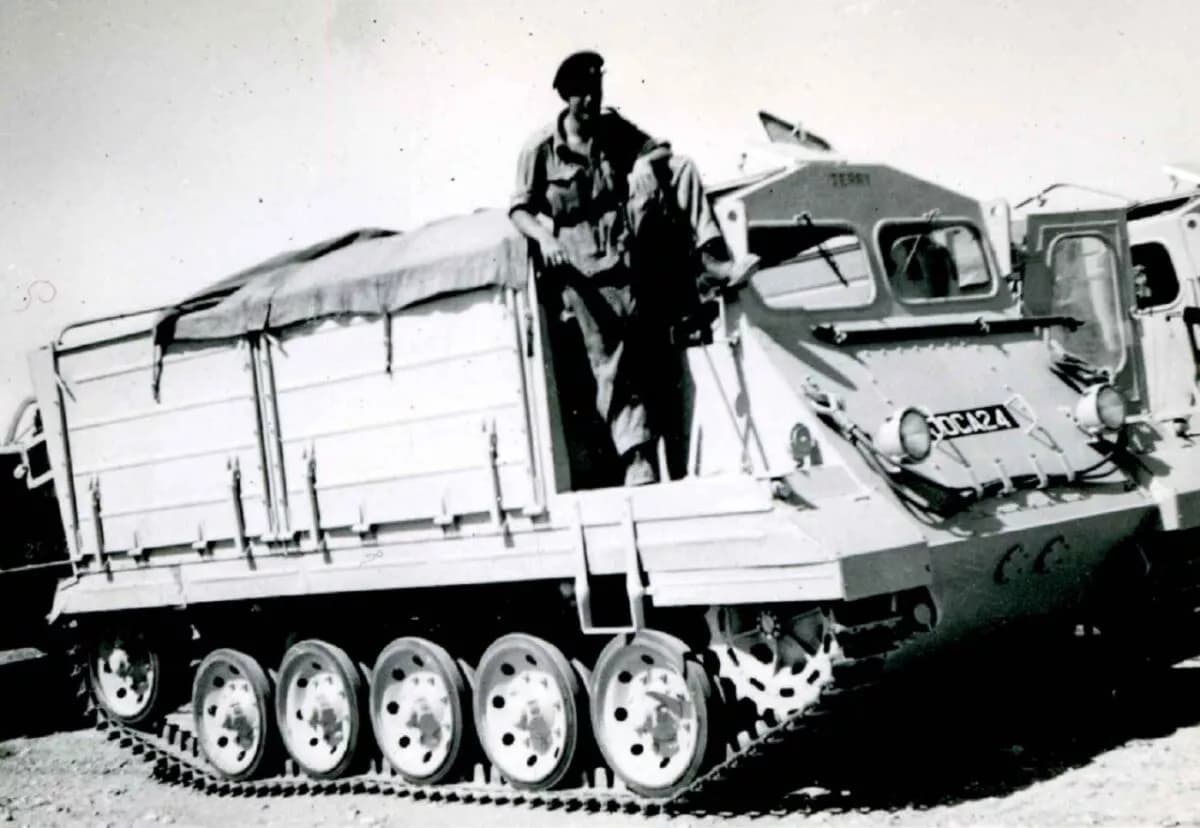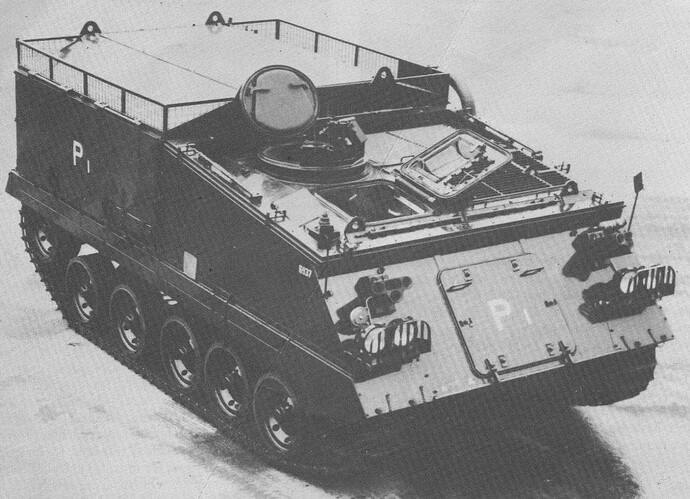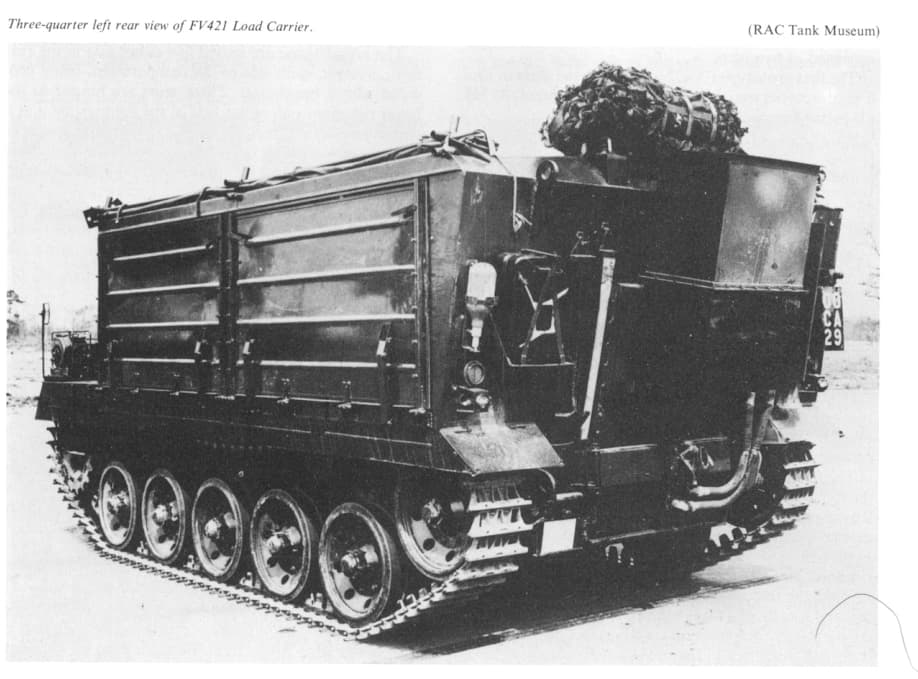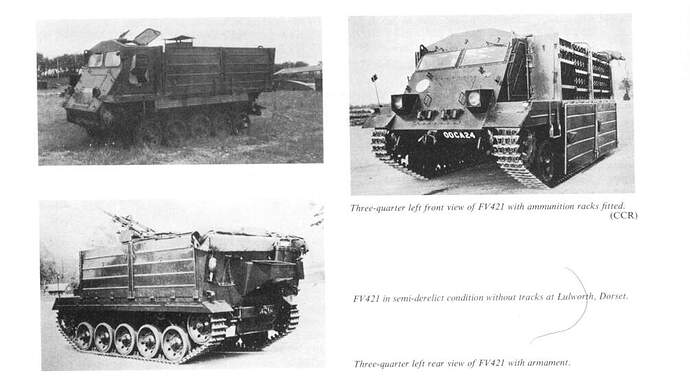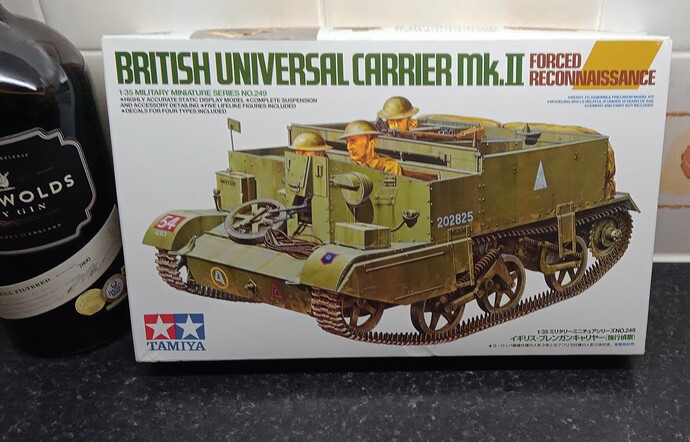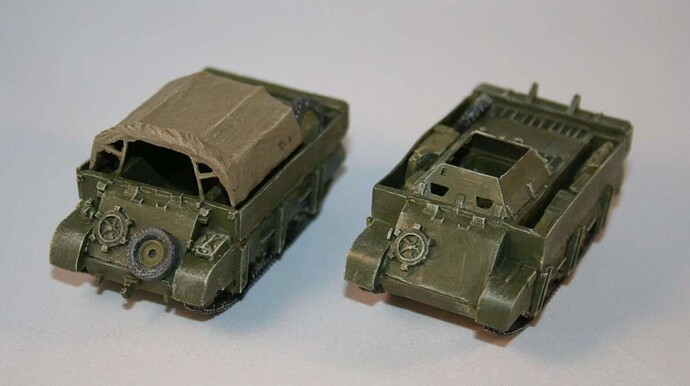Maybe the UK should be happy that the Army hasn’t tried reverting back to cavalry on horses …
If the UC hull is welded, it’s a Mk II. However, not all Mk II have all welded hulls. (The number of rivets used in combination with welds varies some.) Since many Mk I UCs were rebuilt to Mk II UC standards, the absence or presence of rivets and welds in photos is problematic in determining which mark a particular UC started life as. A lot of times, the resolution is too poor to be sure.
Mk I UC’s have two headlights, and Mk II UC’s have only one.
Generally, if the “rails” along the top edges of the rear compartment are made of rectangular wood, then the UC is a Mk I, and if the rails are made of round pipe, then it’s a Mk II. Personally, this is the recognition feature that I look for - wood or pipe rails.
Once again, though, this is not 100% since many Mk I UC were re-built to Mk II standards and received the round pipe crew protection rails. (BTW, the wood was also originally thought to provide a better support for a crewman firing a rifle out of the UC as well as protection for the men climbing in and out.)
If the UC has the three, rectangular pads welded along either side of the crew compartment, then it was at one time prepared for the deep-fording kit (with raised sides that could easily dropped once ashore). Could be either mark, but the deep wading kit seems to have been introduced for D-Day, so that kind of helps to date the photo.
As far as I know, there was no difference made during the war for issuing the Mk I or Mk II carriers or mixing the two marks in units. I’d have to crack the books, but I seem to recall the Mk I rebuilt to Mk II standards was designated the Mk I*.
Interestingly, the 1985–86 edition of Jane’s Armour and Artillery has an illustration (from Alvis) showing the whole of the proposed Stormer family, which includes a “logistics” variant, though with an enclosed rear. The flat-bed variant you showed photos of must be newer, because it’s not mentioned at all.
Also, the concept of using an APC-derived vehicle for this role is not unique or unknown in modern times. The Dutch Army used the YPR 765 prv (pantser-rups-vracht, “Armour[ed]-Track[ed]-Cargo”) in reasonable numbers from the late 1970s until the 2010s, off the top of my head. It’s basically a YPR with the commander’s position moved to where the turret is in the IFV version (the YPR 765 pri), and with an empty rear area with folding safety screens for the crew.
After all the talk about UC, yesterday I decided to read UNIVERSAL CARRIER 1936-48 THE ‘BREN GUN CARRIER’ STORY
An excerpt from it;
Canadian- built Universal Carriers were all fitted with the American 85hp Ford V8 rather than the 95hp Canadian type and were consequently classified No. 2 Mark I*, the asterisk indicating a Canadian-produced vehicle.
From 1943 production switched to an improved model, the No. 2 Mark II*. This was virtually identical with the British version except that extra holes were provided for easy conversion to the Ronson flame- thrower role and, rather than use rubber mounting blocks as weapon rests along the top edges of the hull, the Canadians came up with a simple alternative: a split mild steel pipe.
Jakko,
Even prior to the CVR(T) series there was a planned range of armoured logistic carriers - some even got to trials - not least in Libya (which we treated as a sort of super-large Suffield (BATUS) although that came much later.
and this one (based on the FV 432 chassis but I can’t quite remember the actual designation); I mean, would it really have hurt that much to have brought this into service? Perhaps a knock-on effect of always having teeth arms heading up the armed services but dear God; one could weep at the missed opportunities in Brit Defence Policy of the 50s, 60s, and even 70s:
I remember an inscription above the entrance to a Bundeswehr barracks block in Lippstadt, where I was seconded to on my German language course; I’ve never forgotten it:
Versorgung is nicht alles, aber ohne Versorgung ist alles nicht".
If I’ve gotten my German (and even memory these days) wrong, forgive me, but ain’t that the truth?
I could cry me a river over British procurement, I really could.
Hey! What the hell? Get me a Tamiya kit and some glue NOW!
I forgot about those, and your post makes me remember that the whole FV 432-series itself was even based on an earlier design called FV 420, IIRC (I don’t feel like looking it up ATM), that was cancelled wholesale but which also included a cargo carrier.
You just need to add an extra s at the end ![]() Nicht = “not”, nichts = “nothing”.
Nicht = “not”, nichts = “nothing”.
Sorry - sepsis screwed me over(!)
I must re-visit if I can find it, the Profile Publication on the FV 432 series - which I recall gave quite an insight into those lost, failed - yet essential (to me) - projects.
I mean, I’m no logistician, but a simple armoured, tracked, logistics carrier - surely the obvious?
Now I’m actually near my books, I leaned over and took out my copy of that AFV Profile (No. 53), and indeed, it was the 420-series I was thinking of. There’s a good picture of the FV 421 Load Carrier on page 3, and the next page mentions that the FV 431 was supposed to be a Load Carrier too, which explains why what we consider to be the basic vehicle of the series is the 432.
Hmmm! If I was capable of cutting a straight piece of plastic card, I might be dusting off one of my Takom kits with a view to a conversion(!)
As I said, British procurement has been, largely, a tragedy over several decades.
That Stalwart was the de facto replacement doesn’t really help; it might have been cheaper but only just.
I’ve just tracked down (this time pun intended) my copy of the book “Making Tracks” - as referred to above.
Having just had a brief flick through, I really must commend it to anyone with an interest in the Carrier story and as a “one-stop-shop” reference. It includes mention of the post-war developments such as the Oxford and Cambridge carriers, a Churchill Kangaroo, Saracen, the FV 432 series and CVR(T) - Spartan, and much more.
It really is a little gem; published in 1973, and worth - wait for it - tracking down(!)
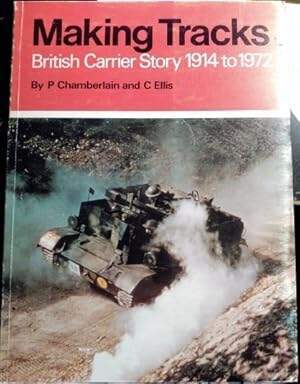
And there you go Brian, two more lesser know carriers there are no kits of, the Oxford and Cambridge.
Well you have reminded me of a photo I saw years ago and have never been able to track down again of a Cromwell in WWII without turret or engine but with opening doors at the back being used as a towed tracked infantry carrier (trailer?). If my memory servers me it mentioned the rear coming from a Sherman. Sort of an engineless towed Cromwell Kangaroo.
I know - these 2 carriers are not unimportant in the developmental thread of Brit APCs; just in case the rest of the world wants to know what we’re blathering on about:
The Oxford:
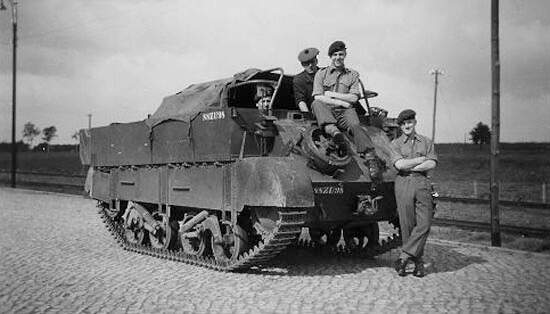
And the Cambridge:
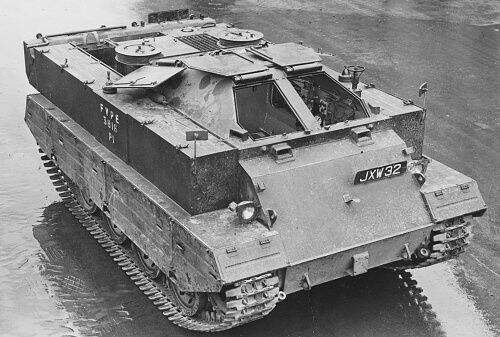
'Never came across the Cromwell/Sherman lash-up I must admit.
Giesbers do an Oxford in a couple of guises - in 1:76 I think:
The British army used these in '91-
It was indeed; initially utilised to support the 2 Tracked Rapier-equipped Air Defence regiments of 1st (British) Corps in 1983.
The M548 was used as a re-supply vehicle capable of carrying 20 missiles. A repair vehicle in these 2 regiments was also used, modified with a front-mounted crane and known as a FAST - Forward Area Support Team vehicle.
